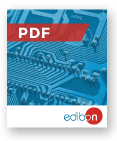
NOVO Folheto de Mecânica
Com a nossa vasta gama de produtos mecânicos, da EDIBON, respondemos às necessidades de formação para o estudo da área de uma forma simples e prática.
BaixarMechanik ist die wissenschaftliche Disziplin, die die physikalischen Phänomene untersucht, die die Elemente der Natur beeinflussen. Obwohl sie als Mechanik bezeichnet wird, umfasst sie tatsächlich sowohl klassisch als auch Quanten Mechanik, die zwei der fundamentalen Säulen der modernen Physik.
Ver maisKlassische Mechanik befasst sich mit der Untersuchung des starren Körpers sowie mit Systemen einer endlichen oder unendlichen Anzahl (kontinuierliches Medium) von Freiheitsgraden, während Quantenmechanik kleinskalige oder wenig Energie.
Wie in jeder experimentellen Wissenschaft, beinhaltet jede mechanische Studie eines Körpers einen AnalyseProzess, aus einer physikalischen und mathematischen perspektive, und Experimente. Aber im Gegensatz zu anderen wissenschaftlichen Disziplinen ist es in der Mechanik nicht so komplex, das in einem realen System interpretierte theoretische Verhalten zu untersuchen.
Dank der Beiträge vieler Wissenschaftler, wie z.B: Newton, Lagrange, Hamilton oder Schrödinger, können einige Grundgesetze oder Prinzipien der Mechanik aufgestellt werden:
Angesichts der Ausdehnung seines Studiengebiets ist es angebracht, die repräsentativsten Bereiche zu nennen:
Aufgrund der konstanten Entwicklung der Industrie sind die Zweige des Maschinenbaus, Automobil- und Automobilbaus,Berechnung von Strukturen, Entwicklung von Maschinen, sowie deren Installation und Wartung,heute am weitesten entwickelt.
Ver produtos7.1.- ENGENHARIA MECÂNICA
7.2.- ENGENHARIA MECÂNICA AUTOMOTIVA
7.3.- ENGENHARIA DE MATERIAIS
7.4.- INSTALAÇÕES E MANUTENÇÃO